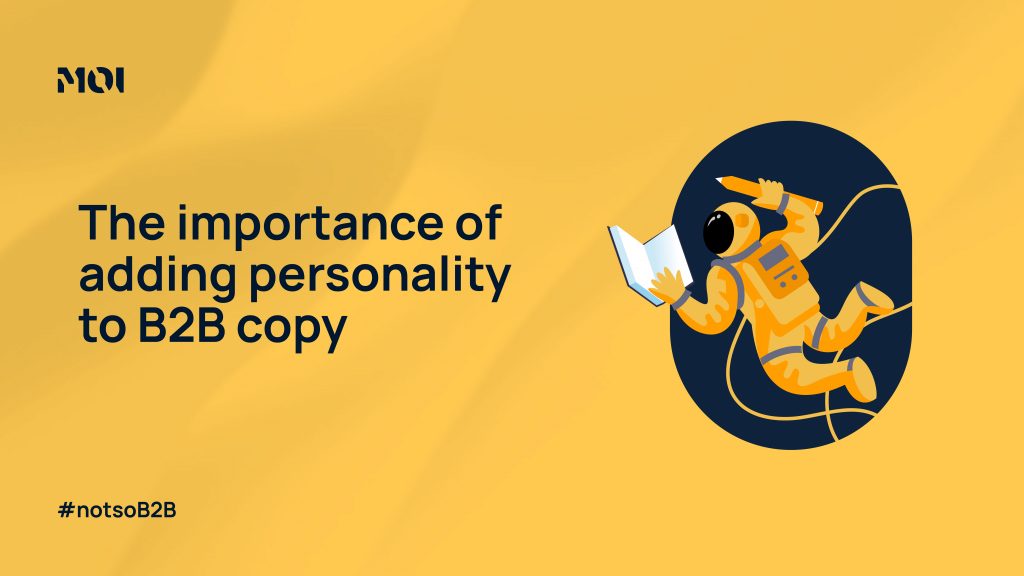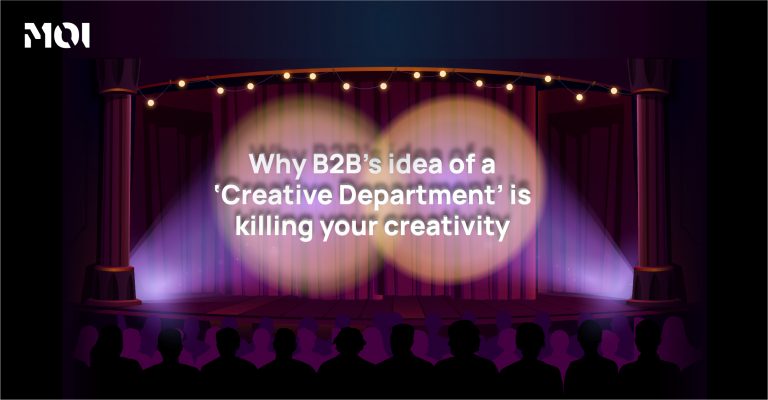
You know, I’ve been in a lot of rooms where the phrase “B2B copy” gets tossed around like an industrial-sized tin of baked beans—boring, utilitarian, and most definitely missing that sweet, tantalising taste of spice. Now, hold on before you start yawning and reach for a pillow, because I’m about to tell you why B2B doesn’t have to mean “bland to bland.” In fact, adding personality to your B2B copy is not just a fun experiment; it’s the only way to avoid slipping into the dreaded abyss of forgettable white papers.
B2B shouldn’t mean ‘Boring-to-Boring’
Let’s face it: traditional B2B copy is often as dry as week-old toast. People think that just because they’re talking to another business, they must use stiff, formal language, chock-full of jargon, acronyms, and lifeless descriptions of product specs. Well, I’m here to tell you that even businesses are made up of people—people who like a little zest and character when they read something.
See, your average B2B reader has heard it all before. “Innovative solutions” this, “next-generation technology” that. All those buzzwords are as dull as dishwater, and they don’t tell anyone why they should give a hoot about what you have to say. The truth is, businesses don’t want to read brochures that sound like they were written by a sleepy corporate robot. They want to be wooed, entertained, and most importantly, they want to know what’s in it for them.
By adding personality—some humour, a pinch of empathy, and the occasional dash of audacity—you’re making the content relatable. You’re giving it a pulse. And that is something people remember long after they’ve moved on to their next meeting.
Be human, not a corporate bot
The goal of B2B marketing is to connect with people, not bore them into submission. Even if you’re targeting a purchasing manager or a business executive, that individual wants to be understood on a human level, not bombarded with robot talk. Incorporating a conversational tone into B2B copy helps you connect better with your audience and keeps your message clear and easy to digest.
We’ve all seen those articles that go something like, “He demonstrates great dexterity in the field of gastronomy.” What does that mean? It’s like reading Shakespeare just to understand a bloke’s a decent cook! Why not just say, “He’s a great cook”? Straight to the point, relatable, and—surprise—comprehensible.
Now, when you translate that to B2B, this means taking out the jargon and replacing it with language that talks about how your solution makes someone’s life better. It’s about highlighting what matters—what’s the ultimate problem your product solves? That’s what people want to know, not just how many gigabytes of data you can crunch. And when you do it in a way that is conversational and straightforward, you’re already ahead of 90% of the competition. (Because, let’s be real, most people think the only way to “sound professional” is to write like they swallowed a thesaurus).
Personality drives emotional resonance
There’s another vital reason to add personality to your B2B copy: emotion sells. No matter how logical we think our purchasing decisions are, emotion plays a significant role. If your brand comes off as friendly, understanding, and knowledgeable, that builds trust. And trust is the most critical factor in B2B sales.
A report highlighted that connecting with buyers on a human level creates that emotional connection which, believe it or not, drives purchasing decisions. You want to be remembered, right? Well, being memorable means having a voice—an actual personality that isn’t afraid to shine through the copy. For instance, instead of the boring, “Our cloud software streamlines data management,” why not say, “Wave goodbye to endless spreadsheets and hello to smooth sailing with our data solution.” It’s like flipping on a light switch in a dark room—suddenly everything feels more alive.
Bring on the humour—but be careful
Another trick up your sleeve should be humour—but used wisely. It’s not always appropriate, especially in highly regulated industries. That said, a bit of wit can do wonders for B2B content, making you stand out from the pack and proving that, yes, even businesses can have a laugh. You need to know when to use it, of course—try cracking jokes in a serious proposal to a defence contractor, and you might find yourself out of a job—but done right, humour can make dry topics interesting.
Remember, if you can make someone smile, you’re already halfway to winning them over.
Storytelling that resonates
Now, let’s talk about storytelling. People love stories—it’s how we understand the world, make sense of things, and remember stuff. Even in B2B, using stories can give your content a narrative arc that captivates your audience. Maybe it’s a story of a client who faced a problem and found a solution with your product. Or maybe it’s a behind-the-scenes look at how your company handled a crisis and came out the other side even better.
Stories help your audience put themselves in your customer’s shoes, making it easier for them to see how your solution fits into their lives. It’s a way of selling without actually “selling,” and guess what? People love that.
Not Just Features, But Benefits
Lastly, let’s not forget: nobody buys features. They buy benefits. Features are what your product is. Benefits are what your product does for your customers. They solve a problem, save time, or cut costs. Your audience doesn’t care that your latest SaaS solution integrates with their existing infrastructure—they care that it makes their job easier, faster, and more efficient.
When adding personality to your copy, don’t be afraid to talk about how those features translate into real-world improvements. Describe the transformation, not just the technical specs.
Personality isn’t a perk; it’s essential
In a sea of boring, personality-less B2B content, the brands that dare to stand out are the ones that get remembered. When you write copy with personality, you’re adding that crucial human element, creating an emotional connection that drives decision-making.
So, next time you’re writing some B2B copy, don’t just stick to the old ways—have some fun. Use some humour, tell a story, speak like a human, and add a bit of audacity. Trust me, your audience will thank you for it, and they’ll probably remember your brand when it matters most—when they’re ready to buy.


